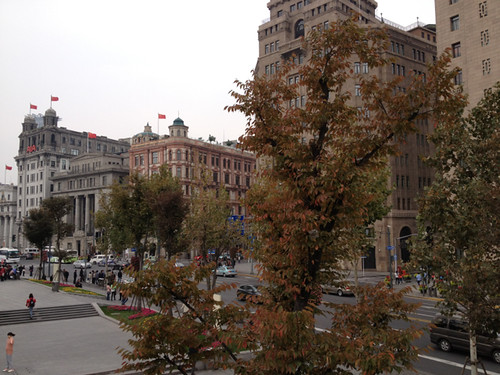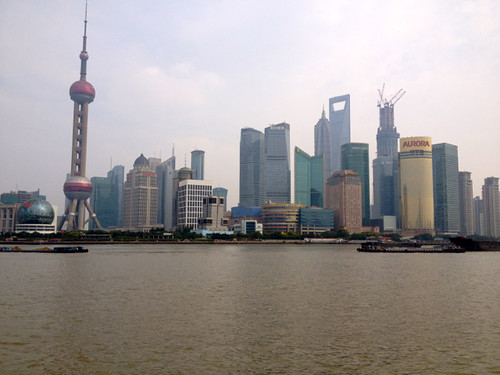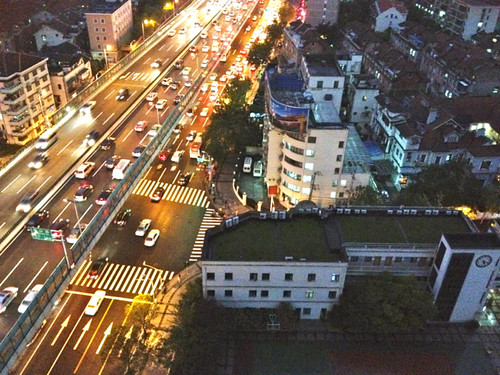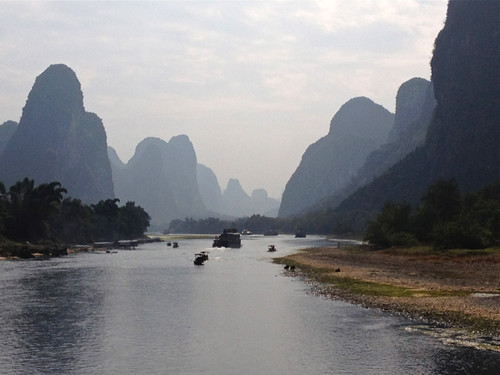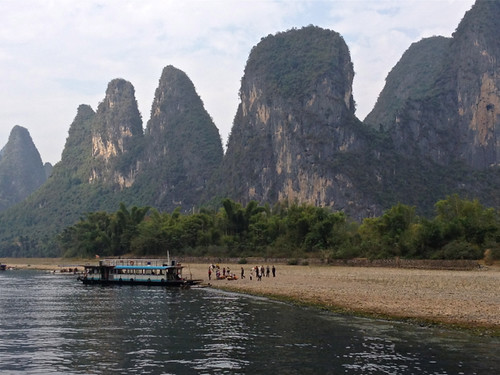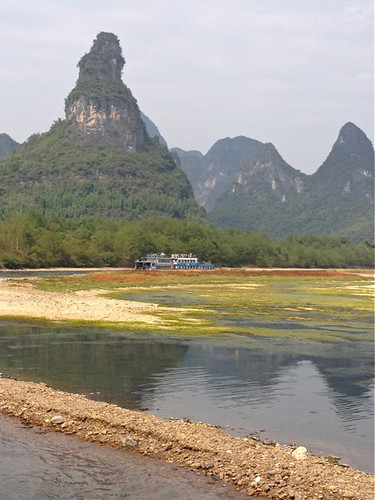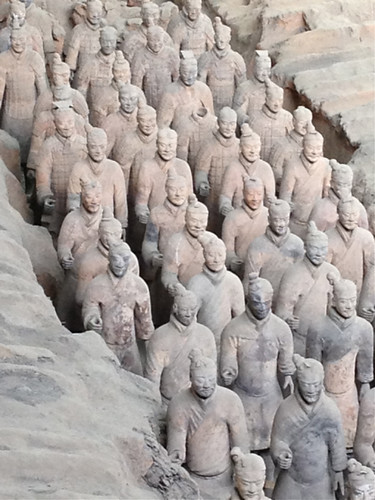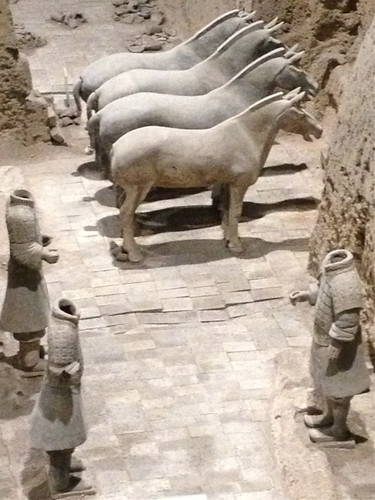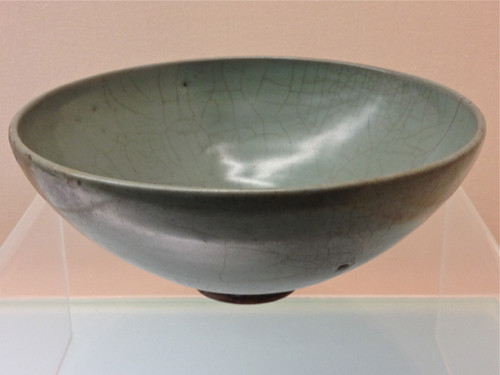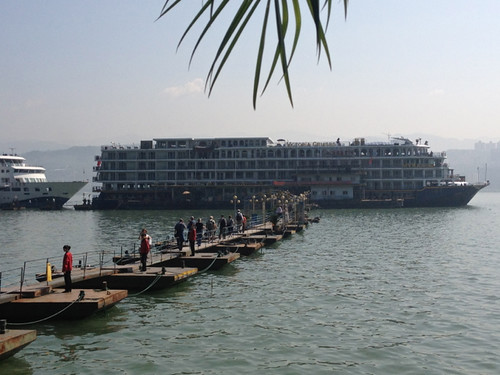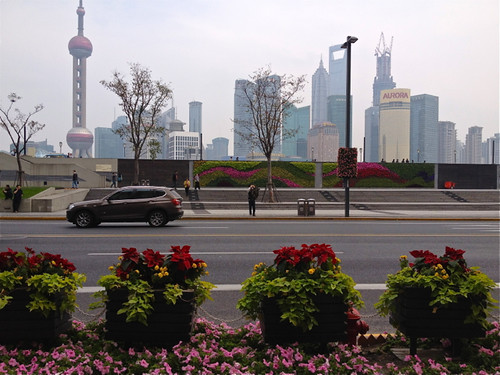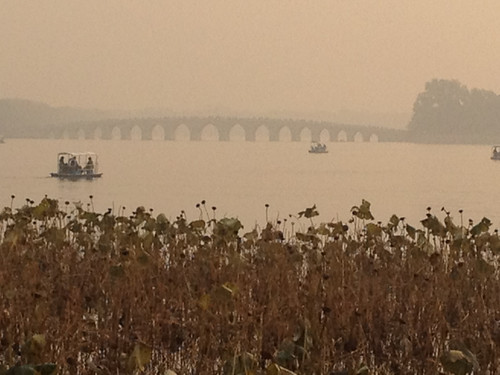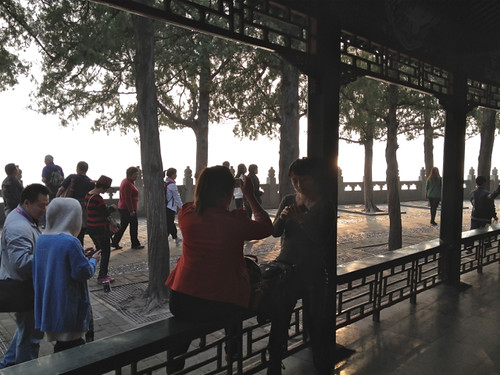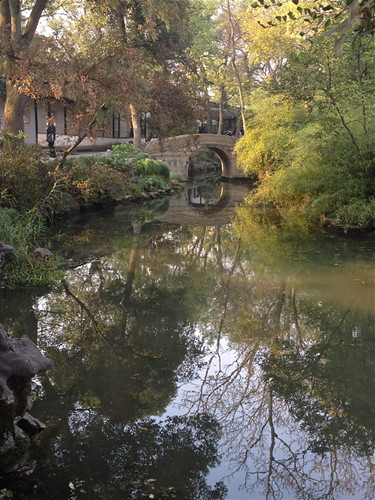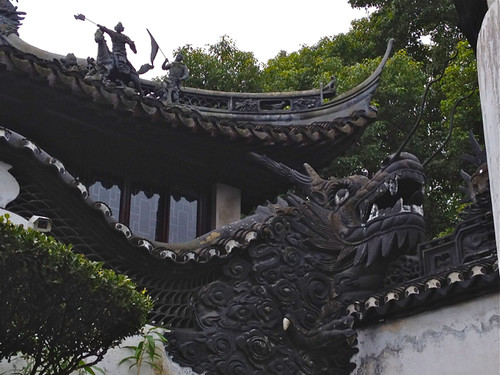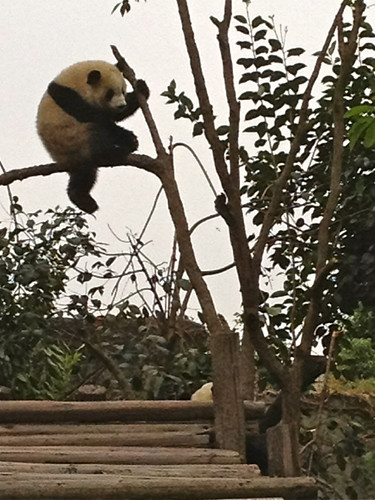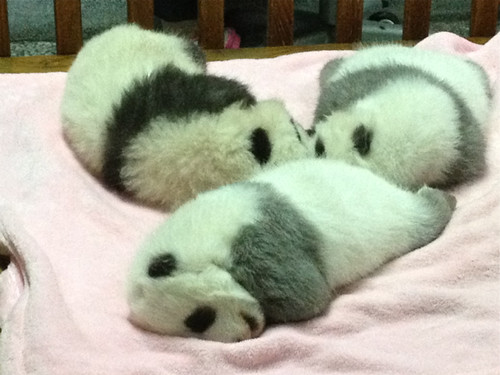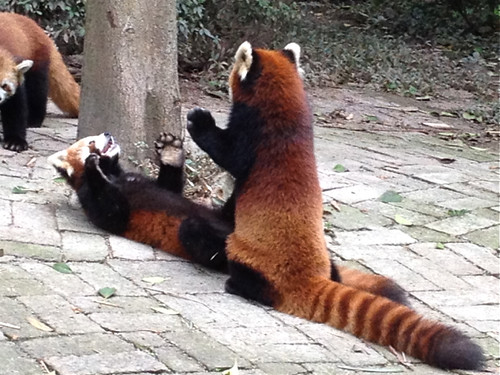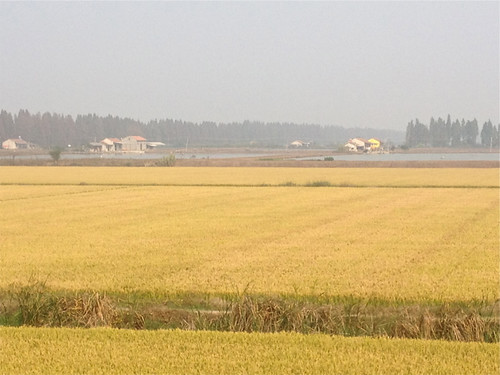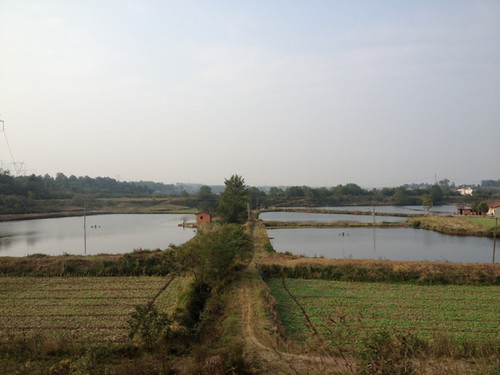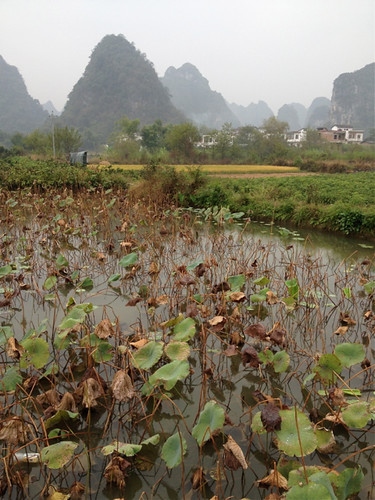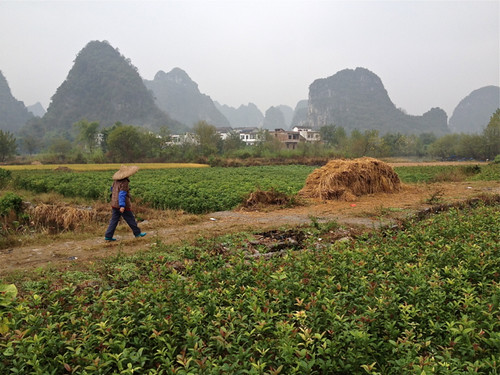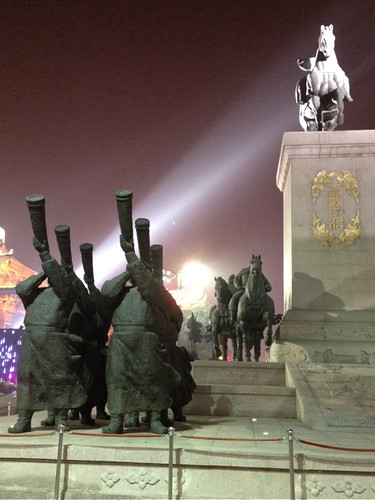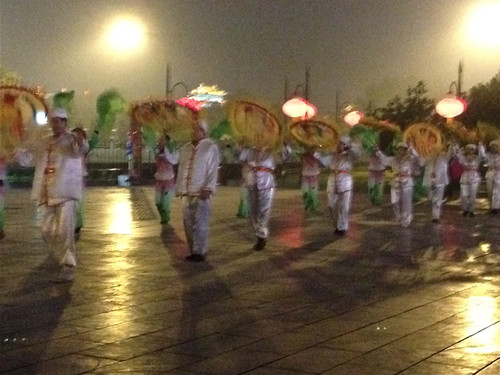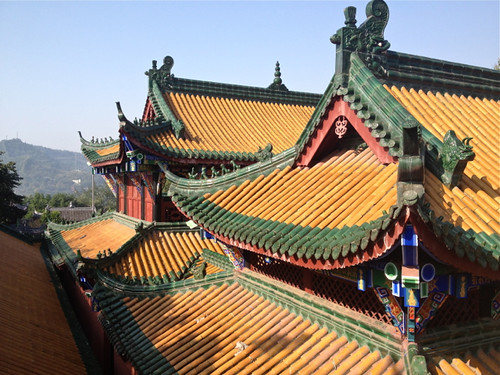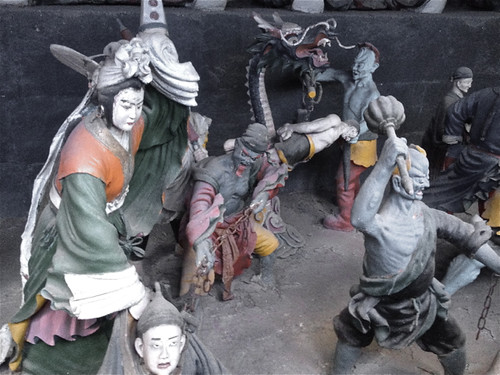
I feel somewhat uncomfortable asking people if I might photograph them, so I missed many opportunities for recording what people were knitting, but I did eventually pluck up my courage and, of course, like all knitters, they were only too pleased to show me what they were doing. All the knitting I observed was done in the round, usually on four long metal double-pointed needles (dpns). Some knitters seemed to use a single, long flexible metal needle. I tried to find out what people were knitting (lots of gesture and mime needed) and mostly it was sweaters or, surprisingly, pants and, in one case, stockings. All were knitting with very fine wool and seemed very competent.

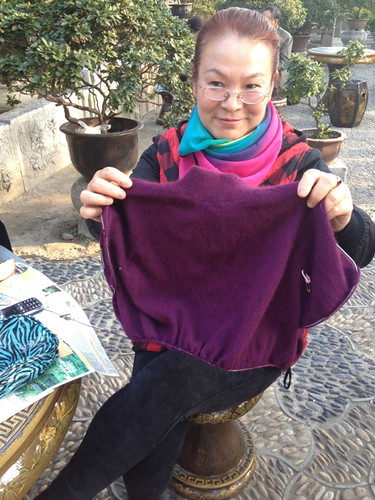
I loved this stylish woman knitting in a park in Shanghai while her companion read his newspaper. The yarn seemed to be an extremely fine angora mix and she was knitting her sweater in one piece from the top down. Very impressive.
So much for other people's knitting. What of mine? There's not much to tell, unfortunately. As socks are such convenient travel knitting I began the Chouwa socks from Judy Sumner's Knitted Socks East and West just before I left. (You might assume from the title of the book that my pattern choice was most appropriate, but given that the 'East' in the title refers to Japan, and that Japan is not regarded with great affection in China, the choice was probably inappropriate). The socks took more than my four week trip to the Philippines and China to complete. Most of the knitting was done on planes and waiting in airports as I was usually too exhausted to knit in the evenings after a day's vigorous touristing, and the sights were too engaging for me to knit on buses or in other places.
So, some not-very-good pictures of my Chouwa socks:

The yarn is Wollmeise Twin in the colour Rosenrot - the most vibrant red you could ever imagine. It's impossible for me to capture the intensity of the colour. I like the socks themselves with patterning that busily mixes lace and cable stitches on the leg of the sock, and then has plain fabric for the feet. Very sensible and wearable.
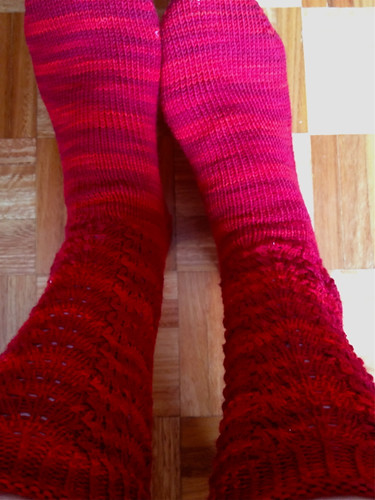
But there are other things to celebrate with these photos. The first is that the post-hip-replacement swelling has gone from my left leg so that I can fit the sock on...and the second is that I actually put the socks on and took them off all by myself. Such an achievement. Who cares if the resulting photos are not very expert?
